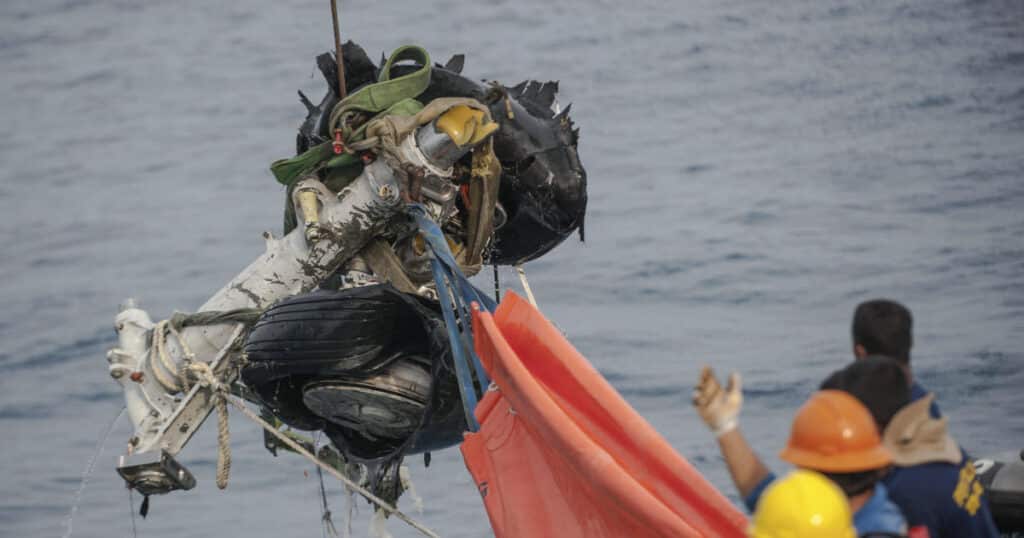If we were to choose one element to explain to non-technical aviation professionals regarding aircraft maintenance, it would be Airworthiness Directives (or ADs)
“Only engineers and mechanics need to worry about AD’s right – I mean, why do I need to get my hands greasy?”
Because my Legal, Accountant, Commercial or Risk Management friend, Airworthiness Directives regulations, and their close cousin the Service Bulletin (SB) are one of a few issues that can traverse all aviation disciplines. Not convinced? Read on.
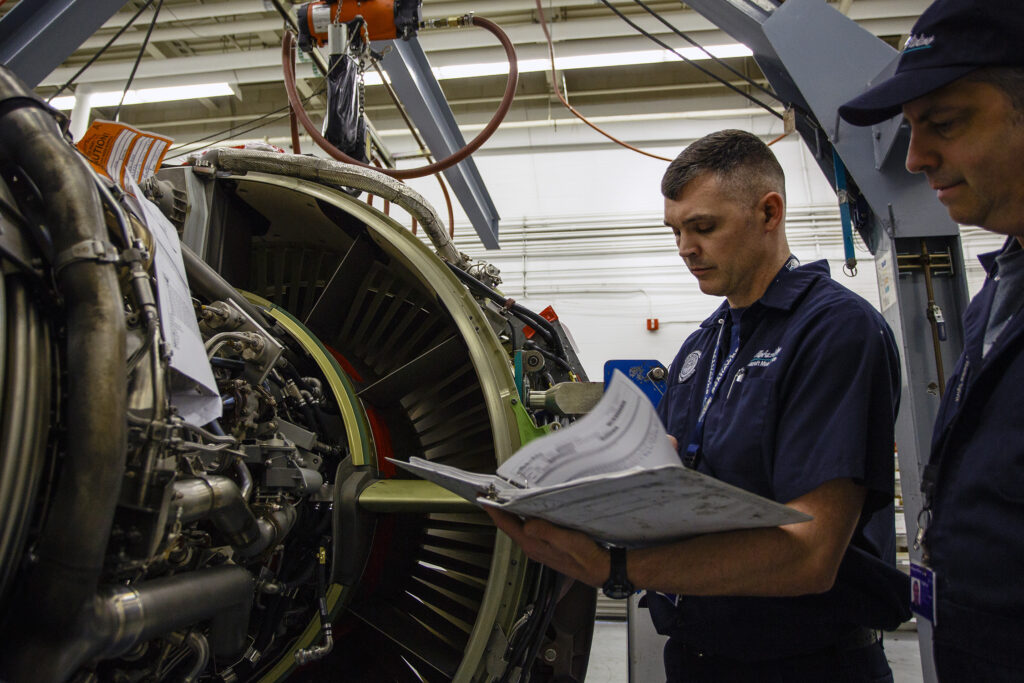
Unsafe Conditions
If you work for an Airline, an Aircraft Leasing company, an MRO, or a parts supplier then you better know about AD’s or life could get expensive for you very quickly. It did for those in the example below.
But we’ve got you covered here at WT Towers. So put away that B737 manual and those calipers. You won’t need them. Just give us a few short minutes of your time and we will install and calibrate the fundamentals of ADs into your knowledge… box(?).
Aircraft Compliance
Definition – What is an Airworthiness Directive?
Airworthiness Directives (ADs) are part of the ongoing obligations of aircraft owners under Part-21 regarding the continuing airworthiness of aircraft. They are mandatory notices to fix unsafe conditions on your aircraft you didn’t previously know you had.
See the way we said aircraft owners? Not necessarily Airlines or leasing companies. That’s right, the designated owner of the aircraft is the person responsible regardless of whether the aircraft itself is being operated by an airline or leased out from a leasing company.
Airworthiness Directives - Document issuance
Where do AD’s come from? Simply put, something breaks or stops performing its function on an aircraft. For example, an actuator that extends a wing flap that the aircraft needs for the landing configuration. There is now an unsafe condition.
We don’t want this. We want safe flights. And this actuator problem is not an isolated incident that we can just fix. It is persistent and it has been decided that every “type” of this actuator, or those with similar designs, could fall victim to this same unsafe condition. But this is a good thing!
What the industry is saying is that we have found a latent type design fault, something that could happen again, and we want to give you notice so you can address it. This is one of the reasons Aviation has the safety record it has.

Interim Action
ADs can be for parts, sub-systems, or major systems. Or even an Engine. But the process is the same. The discoverer of the fault notifies its national authorities who in turn notifies the Federal Aviation Administration, or EASA, depending on where the aircraft (or part) manufacturers were issued their production certificates.
They then look at this directive, engage with industry (especially those that might know this system or part intimately) and they produce Comments for improvements or corrective actions known as AMC (acceptable means of compliance). These comments suggest ways to fix the problem based using alternative methods and compliance times.
By turning to Industry and asking for these comments, you get a holistic view. Not just the OEM or a singular group of experts. Everyone gets a say. And because an AD publication is a mandatory action, whatever the flight standards district office decides you need to do, you must do. And you must do it within a prescribed period or face fines or legal action.
Flight Action
Here is an example of an actual AD.
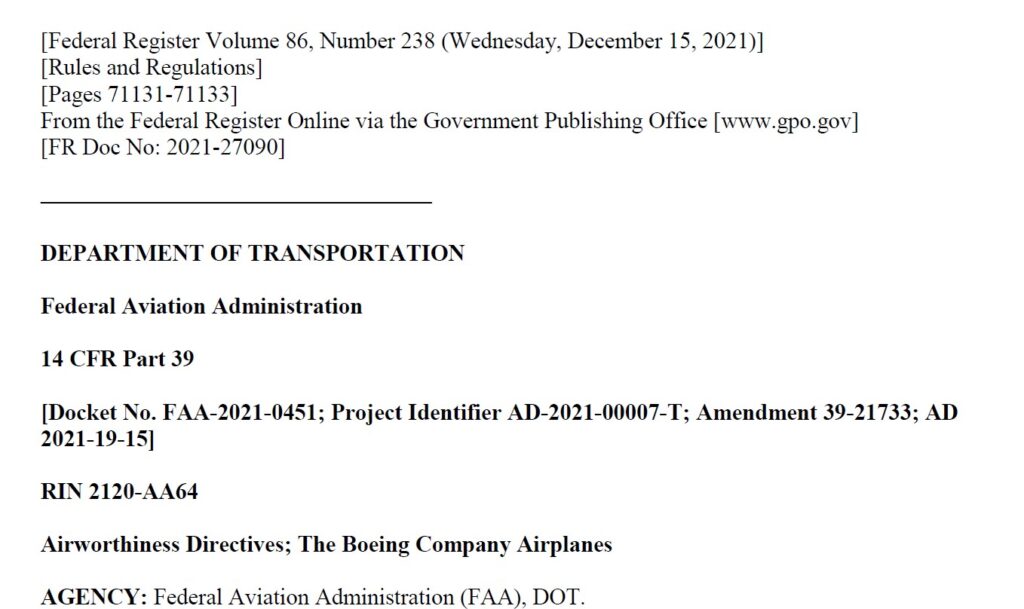
Electronic versions of AD’s can be readily found in both EASA and the FAA Portals. Feel free to access the regulatory documents, but that’s only for the purists. Or engineers. This article is not designed to be a technical masterpiece or a regulatory gender-reveal explosion. It’s meant to be an award-winning, witty piece, on what matters the most, besides AD compliance – Safe flights.
Oh, and Money.
If you are not a technical person don’t worry about the format, the directive comments are in plain English and are readily understood. Also, ADs apply to aircraft or engines in any authority. So, the FAA, EASA, or the state of manufacture of the part will be affected.
Compliance Certificate
Now the more astute of you (accountants mostly) will have noticed a Risk here. You see, when you take your car to the shop for a service, later they call you with seventeen other things that need to be done. And you always think the same thing. What do I HAVE TO DO? Brakes – Yes. Engine timing chain – Of course. Boot dimmer light – Next time.
Now imagine BMW, or Mercedes, or the Department of Transport sending you an email with comments telling you that they found an issue somewhere deep in that engine that needs to be fixed. And they issue a legal notice that you need to do it right now.
Your car is way past its warranty, so you need to contact your bank for a loan. Thankfully, this level of failure measuring mode does not apply to cars. But it is part of the rules on aviation safety for aircraft that carry human beings subject to the laws of gravity.
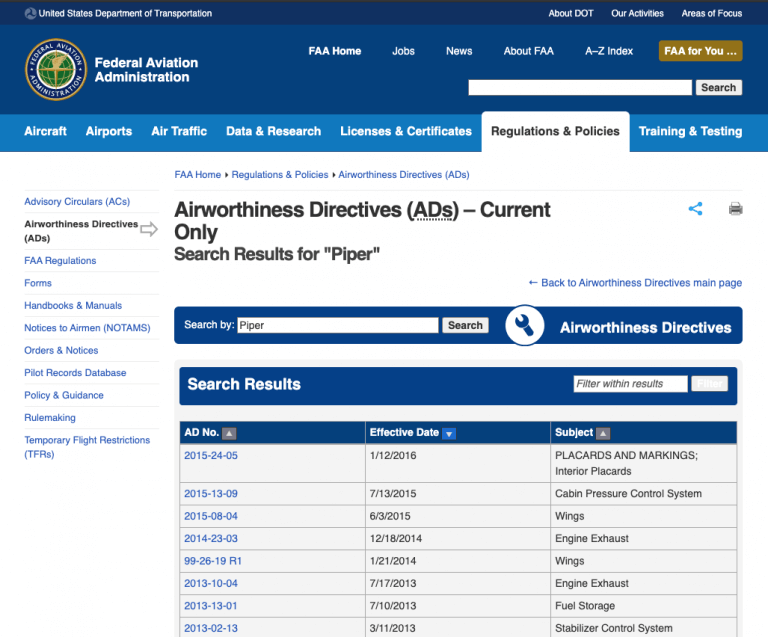
Airworthiness Directive
AD’s can come at any time in an aircraft’s life and aircraft can fly for 30 years. 50 if it’s been converted into a freighter. And let me tell you, I had to take a short nap after paying an invoice for the repair of a toilet door latch on a B777 in 2007.
So just imagine what deep surgery on an engine can cost. In fact, don’t imagine, let me just tell you. A modern aircraft engine disassembly (when we just take it apart so we can see what’s wrong) – No repair, No replacement of parts. Just inspect what we call the “hot-section”, can cost USD $1m.
This doesn’t include money lost with the aircraft being grounded, or the costs of shipping the engine to the shop on special cargo aircraft. We could go on.
Methods of Compliance
So, when the AD notice comes through, you better have your ducks in a row. “What do you mean?” Well, your lease agreement or other commercial terms with the operator of your aircraft better have the obligations set up so that you are comfortable with your AD exposure.
The geniuses amongst you will have zero obligations, but most airlines are far too clever for that. In most cases these contracts will have a certain level of AD “cost-sharing”. You see the airline operator is fully aware of the AD and SB risks.
They are fully aware because when the aircraft is on their AOC, they know they are responsible for regulatory actions and to pay for AD’s. Contracts vary and so we cannot tell you what Lessor A does with Airline B, but fundamentally what happens is that a ceiling will be identified.
Say USD $50k or $100k, where the airline will take responsibility for ADs up to that amount. After that, they will share equally the full costs of the AD with the owner. Which makes sense right?
Because if that AD comes during the last month of a lease agreement, the airline could pay for something she won’t need for much longer. Equally the owner will not want a serious AD outstanding on an aircraft that he will shortly put on the forecourt.
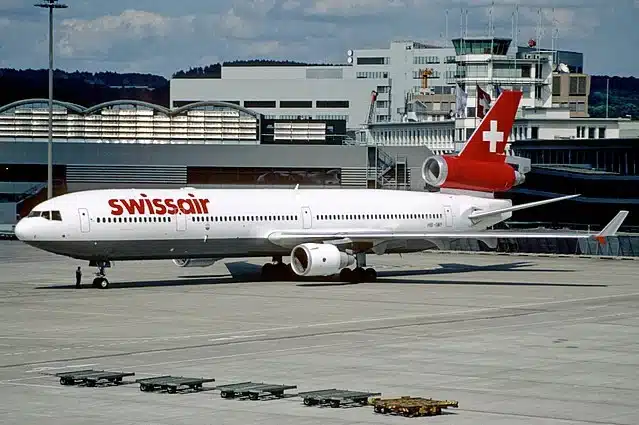
AD Cost - Swissair Flight 111
A Swissair MD11, a civil aircraft, flying from JFK in 1988 crashed shortly after take-off. Faulty wiring resulted in a fire behind the instrument console that filled the cockpit with smoke. Causing the crew to lose control. As always, we urge you to read the full report.
One key finding was an MPET-covered Thermal Acoustic Blanket. This blanket was a key contributor to (lack of) fire suppression and after the crash an AD certificate was issued to have all blankets removed. From all aircraft.
Understandably you will agree, but there were significant costs associated that were borne by the aircraft owners as the entire cockpit needed to be disassembled. But the story doesn’t stop there. McDonnell Douglas had used this very same blanket on its fleet of narrow body MD-80 aircraft.
A competitor to the B737 and A320 at the time, before Boeing bought them, this AD was extended to this aircraft version as well. These owners were handed bills for interim actions that represented a significant percentage of the aircraft’s market value.
Airworthiness Directive Issuance
Another landing gear pylon AD added to that civil aircraft’s woes making a good portion of them beyond economic repair. At a time in an aircraft’s life where you are already spending more on compliance than anything else.
So, there you have it. Airworthiness Directives are a key tool by Aviation administrations to make sure that discovered faults or latent risks are combated with comments that contain acceptable means of compliance used to fix that problem.
Amen to that. So, if you work on lease agreements and the AD clause section comes up, you’ll sit up and pay attention. And have some comments of your own.

